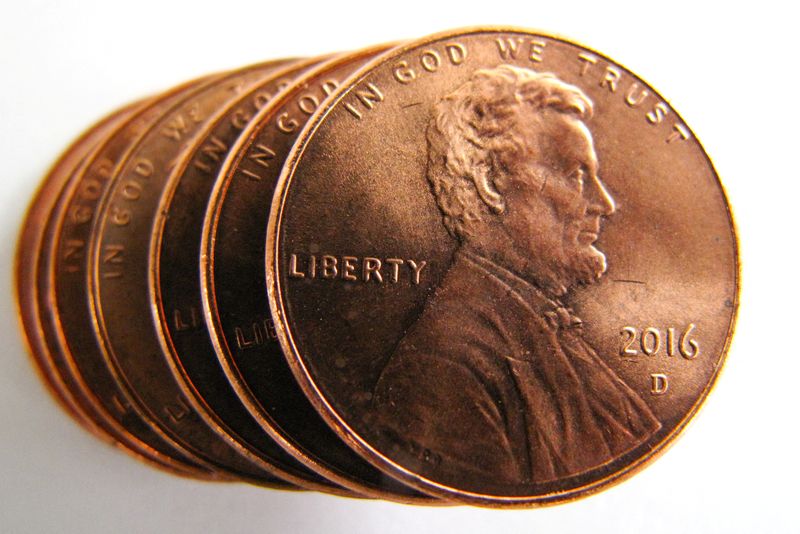US Treasury unveils plan to end production of penny coin

By Ryan Patrick Jones
(Reuters) -The federal government is winding down production of the penny coin following a bipartisan effort to nix the lowest-denomination of U.S. currency over cost concerns, according to a plan outlined by the Treasury Department on Thursday.
The department placed its final order for blank pennies in May, it said in a statement. It expects to stop putting new pennies into circulation by early 2026.
President Donald Trump in February directed Treasury Secretary Scott Bessent to cease production of the coin. Trump has described spending on penny minting as “wasteful.”
In recent weeks, Republican and Democratic lawmakers introduced separate bills in the House of Representatives and the Senate calling for an end to penny production.
The change means that businesses will have to start rounding the prices of cash transactions up or down to the nearest five-cent nickel as the number of pennies in circulation dwindles.
The Treasury’s penny phase-out plan was first reported by the Wall Street Journal, the details of which were confirmed to Reuters by a department spokesperson.
The cost of producing the penny has risen from 1.3 cents per coin to 3.69 cents over the past 10 years, according to the Treasury. It said stopping production will lead to immediate annual savings of $56 million.
The penny was first issued by the government in 1793. Since 1909, the profile of President Abraham Lincoln has adorned the obverse side of the coin that is made of zinc and copper.
Americans have debated for years whether the penny should be dropped from the line-up of American currency.
Supporters of the penny argue it helps keep consumer prices down and is a source of income to charities. For its critics, the coin is a nuisance that ends up being discarded in drawers, ash trays and piggy banks.
There are around 114 billion pennies currently in circulation in the U.S., according to the Treasury.
(Reporting by Ryan Patrick Jones; Editing by Conor Humphries)









